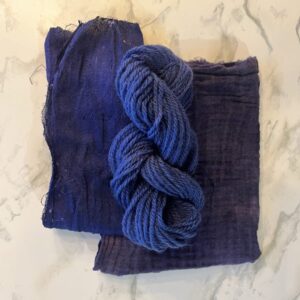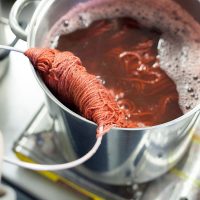This week on FEEDBACK FRIDAY: Too much dye on yarn and which natural dye extracts can be used without mordanting?
MORDANT MONDAY: If It’s Tannin Rich Do You Need Mordant?
We get mordant questions all the time at Botanical Colors so why not create Mordant Monday??? Got mordanting questions? Email [email protected] YOU ASKED: I’ve read that natural dye materials with a high tannin level don’t need a mordant to dye wool. I have a rain barrel that collects run-off from the roof. The roof is under a huge maple tree, which over the course of the seasons, drops flower clusters, seeds, leaves and sticks onto the roof. This turns the runoff water in the rain barrel a brownish color. I believe this is due to the tannin in these items? … Read more











